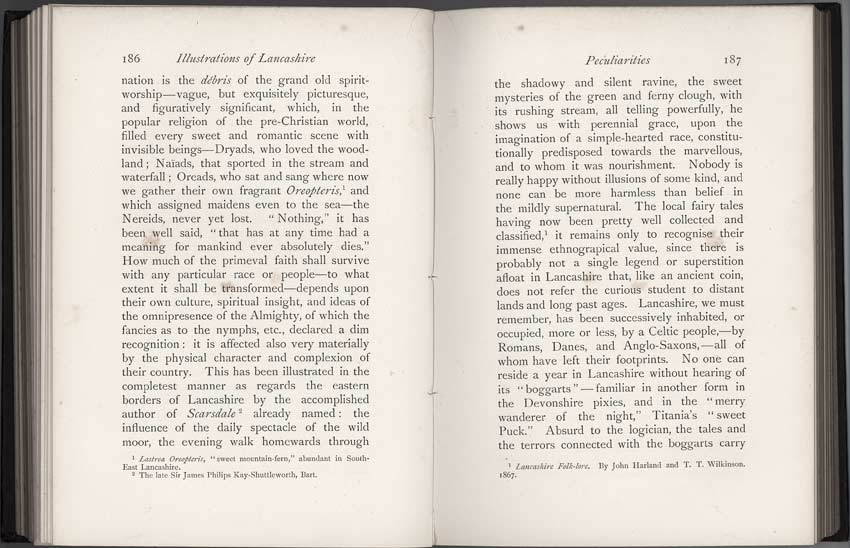
Scan and page transcript from:
LANCASHIRE - Brief Historical and Descriptive Notes
by Leo H. Grindon
Pub. 1892
pages 186-187 |
186 Illustrations of Lancashire nation is the débris of the grand old spirit-worship - vague, but exquisitely picturesque, and figuratively significant, which, in the popular religion of the pre-Christian world, filled every sweet and romantic scene with invisible beings - Dryads, who loved the woodland; Naiads, that sported in the stream and waterfall; Oreads, who sat and sang where now we gather their own fragrant Oreopteris,1 and which assigned maidens even to the sea - the Nereids, never yet lost. "Nothing," it has been well said, "that has at any time had a meaning for mankind ever absolutely dies." How much of the primeval faith shall survive with any particular race or people - to what extent it shall be transformed - depencls upon their own culture, spiritual insight, and ideas of the omnipresence of the Almighty, of which the fancies as to the nymphs, etc., declared a dim recognition: it is affected also very materially by the physical character and complexion of their country. This has been illustrated in the completest manner as regards the eastern borders of Lancashire by the accomplished author of Scarsdale 2 already named: the influence of the daily spectacle of the wild moor, the evening walk homewards through 1 Lastrea Oreopteris, "sweet mountain-fern," abundant in South-East Lancashire. |
Peculiarities 187 the shadowy and silent ravine, the sweet mysteries of the green and ferny clough, with its rushing stream, all telling powerfully, he shows us with perennial grace, upon the imagination of a simple-hearted race, constitutionally predisposed towards the marvellous, and to whom it was nourishment. Nobody is really happy without illusions of some kind, and none can be more harmless than belief in the mildly supernatural. The local fairy tales having now been pretty well collected and 1. Lancashire folk-Lore. By John Harland and T.T. Wilkinson. 1867 |
